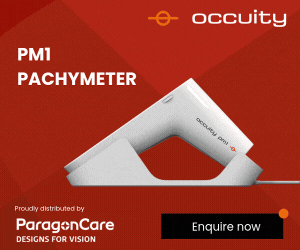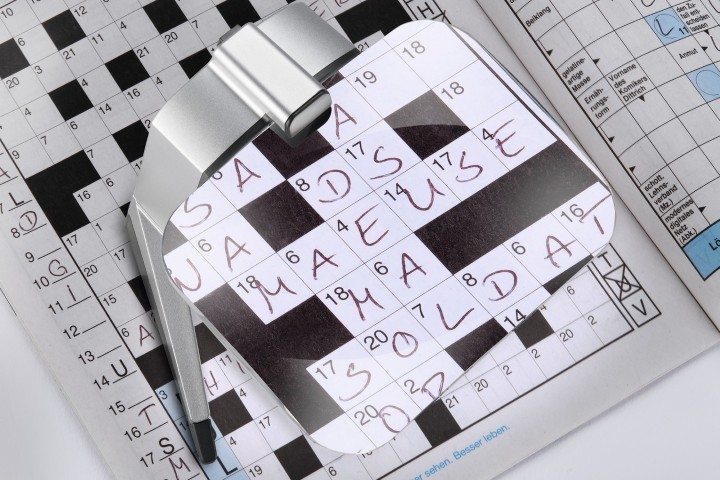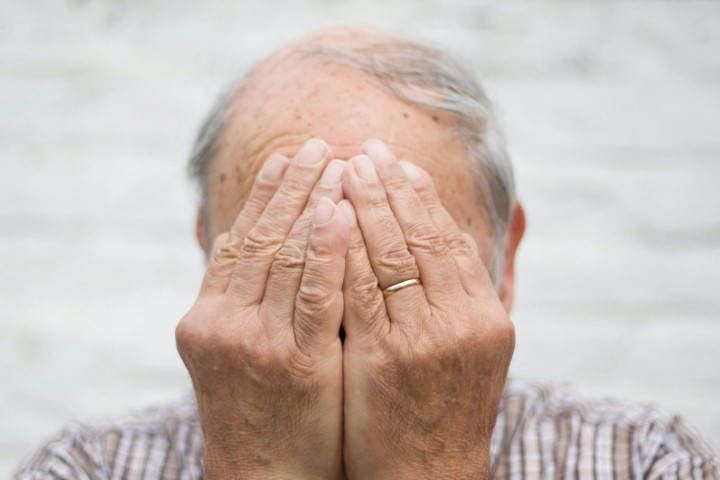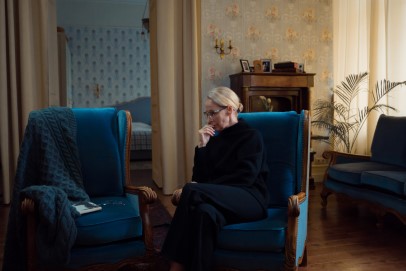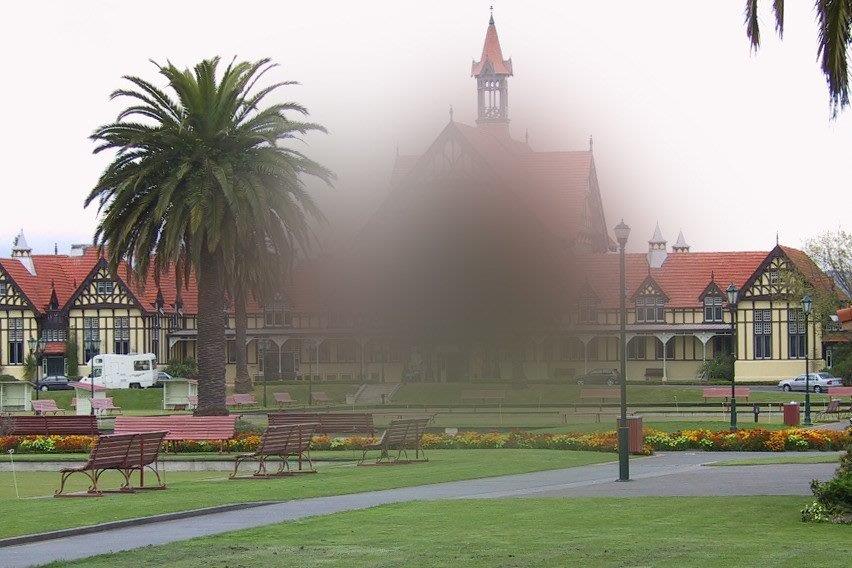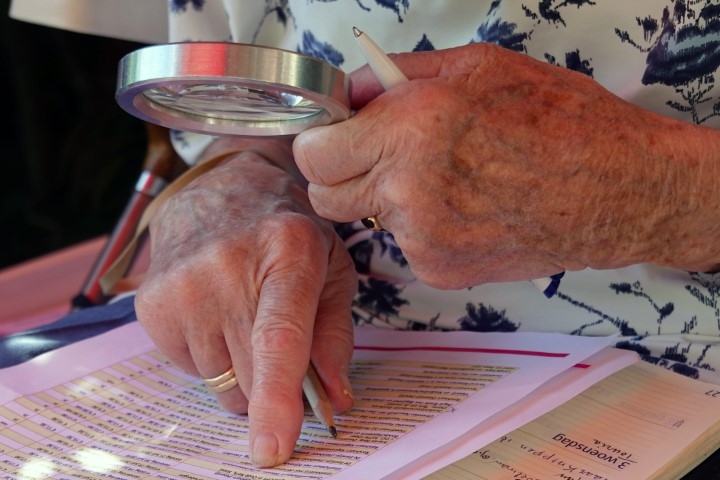Understanding Charles Bonnet Syndrome
Imagine being a passenger in a car and a brick wall suddenly appears in front of you, or rows of brown, high-rise buildings start to sway and bend gracefully towards you. Perhaps, as you prepare for bed, you pull back your covers and find a brown, furry thing there. You’re not afraid because although you have no pets, you have seen this furry thing quite frequently recently.
These are real examples of Charles Bonnet Syndrome (CBS) as told to me by sane, lucid and sometimes, understandably, extremely anxious people.
Another patient of mine recalled finding her retirement village garden planted with gloriously coloured flowers and even thanked the gardener before returning to her apartment to find the flowers had disappeared. While another said she saw an army of Roman-like soldiers, marching around the room before disappearing into the ceiling. Her husband laughed and called her a “silly old ding-bat”.

"Not one, but a whole herd of elephants, blocking the main street of Taupo..." said Gael Spence, describing one of her visions (see ref. 1)
Though CBS hallucinations are rarely the stuff of horror movies, they are confusing and worrying for patients, leading many to question their own sanity.
The syndrome is named after the 18th-century Swiss naturalist and philosopher Charles Bonnet who first described the visual hallucinations in 1760, after his 87-year-old grandfather began telling him what he’d been seeing. Bonnet’s grandfather was thought to have macular degeneration and possibly cataracts and, until quite recently, it was thought that CBS only occurred in conjunction with macular degeneration. Recent research, however, indicates it’s associated with a loss of a patient’s visual ability to distinguish an object from its background, which can occur with many visual or neurological conditions.

Charles Bonnet
Mary Lou Jackson, an ophthalmologist and director of the Vision Rehabilitation Center at Harvard Medical School, has published several, frequently quoted papers investigating CBS in glaucoma patients. Her research indicates CBS occurs in similar frequency in glaucoma patients to other eye and neurological conditions and also concluded its appearance is most closely linked to contrast sensitivity loss rather than visual acuity.
In CBS, a person often sees complex visual hallucinations such as patterns like brickwork, basketwork or lace, superimposed on everyday items like walls or furniture, or people, animals or inanimate objects, not necessarily identifiable as something previously seen. The defining elements which differentiate CBS from other hallucinatory conditions include:
- Well-formed visual hallucinations the patient can describe, rather than vague flashes of light
- Insight into the unreal nature of the hallucination, especially after it is explained to the patient. For example, a patient told me how on waking she’d found papers scattered on her bedroom floor. She knew there was no open window and no pile of papers that could be blowing around, yet she still got out of bed to pick them up before they disappeared
- Some degree of vision loss before experiencing the hallucinations
- No other previously diagnosed psychiatric or neurological diagnoses to explain the hallucination, i.e. the patient appears to have no other sign of dementia or cognitive change
CBS hallucinations are thought to originate in the brain. Many attribute them to deafferentation causing a lack of true visual input into the visual cortex, which results in a release phenomenon analogous to phantom pain after limb amputation. Others simply describe the phenomenon as the brain trying to fill in the gaps in a patient’s vision, where, without visual input, unregulated visual cortex activity emerges as hallucinations.

Patient hallucination description, involving Lilliputian visions, which are commonly seen in patients with CBS (Pang)
The exacerbation of social isolation
Regardless of the origin, it is well documented that the occurrence of visual hallucinations increases at times of sensory deprivation, such as when a person is socially isolated or in the early hours of the morning when the sufferer is awake, but there is nothing much else happening. Usually it disappears when distractions, such as the radio or television, or some new activity are initiated.
The prevalence of CBS in elderly patients is reported to be anywhere from 0.5% to 40%; the high variance due to CBS frequently being attributed to mental illness. Generally, however, it is thought to affect about 30% of patients with some form of vision loss. But it is believed to be heavily under reported due to patient anxiety about the onset of dementia and negative comments from family, friends and medical personnel.
My experience, from talking to almost all of my low vision patients about CBS, is that this anxiety is warranted. It does not matter how sensitively I initiate the conversation, a large proportion of accompanying family and indeed patients, will immediately make some sort of joke or negative comment. For those who have experienced CBS however, I can usually sense a change in body language immediately.
A simple question such as, “has anything like that ever happened to you?” can result in a myriad of responses from tears of relief to embarrassment or anger that nobody took them seriously when they tried to speak of it.
Although CBS is usually associated with visual hallucinations, it also occurs with other sensory deprivation. There are similar phenomena reported for the olfactory and auditory senses. Olfactory deprivation has been shown to result in functional changes and even structural changes, such as decreased mucosa thickness in the nose and possible changes in the number of receptor neurons.
In the auditory pathways, tinnitus is defined as a perception of a sound that is not related to an acoustic source or electrical stimulation. Usually, but not always, this is associated with hearing loss. It can range from simple sounds to complex musical or even verbal hallucinations. Was Beethoven experiencing auditory CBS?
One experience of a 99-year-old widow continues to resonate with me. Fiercely independent and very lucid, this lady had resisted moving out of her home into a rest home for a long time. Three weeks after she gave in and moved, and before staff had really got to know her, she noticed a man standing by her bed in the early hours of the morning. As she watched he floated up into the top corner of her wardrobe and disappeared. He appeared several times over the next few weeks and unwilling to speak to staff about it for fear that they would write her off as a dementia case, she concluded it was the ghost of a previous occupier and continued to worry he was trying to tell her something. As she related this to me, her younger sister who was hearing all this for the first time was clearly aghast at what must have been a frightening experience alone in this new place. She asked her sister, was it her husband who appeared by her bed leaning over her? “Oh no” said the 99-year-old with a big smile, “he was much more handsome.”
References
- ML Jackson, K Bassett, PV Nirmalan and EC Sayre. Contrast sensitivity and visual hallucinations in patients referred to a low vision rehabilitation clinic. Br J Ophthalmol. 2007 Mar; 91(3): 296–298.
- https://eyeonoptics.co.nz/articles/archive/living-with-cbs/
- Linda Pang. Hallucinations experienced by visually impaired: CBS. Optom Vis Sci. 2016 Dec; 93(12): 1466–1478
Naomi Meltzer has worked in optometry for more than 30 years. She runs an independent optometry practice specialising in low vision consultancy in Auckland.






